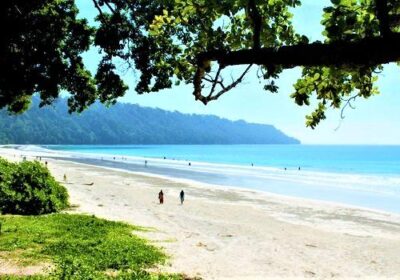Bhagabatpur Crocodile Project: A Unique Sanctuary in the Sundarbans
The Bhagabatpur Crocodile Project, nestled in the heart of the Sundarbans, is an extraordinary sanctuary dedicated to the conservation of the estuarine crocodile (Crocodylus porosus), one of the largest and most aggressive species of crocodile in the world. This project plays a crucial role in protecting and nurturing these ancient reptiles, while also offering visitors a rare opportunity to observe them in their natural habitat. The Bhagabatpur Crocodile Project is a must-visit for wildlife enthusiasts and those keen on exploring the unique ecosystems of the Sundarbans.
A Sanctuary for Estuarine Crocodiles: The Bhagabatpur Crocodile Project is one of the most important breeding and conservation centers for estuarine crocodiles in India. The project was established with the aim of protecting these reptiles, which were once on the brink of extinction due to habitat loss and poaching. The sanctuary provides a safe environment for the crocodiles to breed, hatch, and grow before they are released into the wild.
Crocodile Breeding and Rehabilitation: The project includes a hatchery where crocodile eggs are incubated under controlled conditions to ensure high survival rates. Once the young crocodiles reach a certain size, they are released into the mangrove swamps of the Sundarbans, where they continue to grow and thrive in their natural environment. The project also focuses on educating the local communities about the importance of crocodile conservation.
Exploring the Sanctuary
Guided Tours and Wildlife Observation: Visitors to the Bhagabatpur Crocodile Project can take guided tours of the sanctuary, where they can learn about the breeding process and the life cycle of the estuarine crocodile. The highlight of the visit is the opportunity to observe these magnificent creatures up close, including the rare chance to see them in various stages of their life, from hatchlings to full-grown adults.
Birdwatching and Mangrove Exploration: The sanctuary is not just about crocodiles; it is also home to a variety of bird species, making it a great spot for birdwatching. The surrounding mangrove forests are rich in biodiversity, offering a glimpse into the complex ecosystems of the Sundarbans. Exploring the mangroves by boat or on foot adds another layer to the experience, allowing visitors to appreciate the unique flora and fauna of the region.
A Glimpse into the Sundarbans Ecosystem
The Importance of Mangroves
Mangrove Habitat: The Bhagabatpur Crocodile Project is located within the Sundarbans, the largest mangrove forest in the world. Mangroves are vital for the health of the ecosystem, providing shelter and breeding grounds for numerous species, including fish, birds, and reptiles. They also protect the coastline from erosion and serve as a natural barrier against storms and tidal surges.
Biodiversity Hotspot: The Sundarbans is a UNESCO World Heritage Site and a biodiversity hotspot, home to the iconic Bengal tiger, spotted deer, wild boar, and numerous other species. The Bhagabatpur area is an integral part of this rich ecosystem, and visiting the crocodile project offers a deeper understanding of the interdependence between different species and their environment.
Educational and Research Opportunities
Conservation Education: The Bhagabatpur Crocodile Project is not just a tourist attraction; it also serves as an educational center where visitors can learn about the importance of wildlife conservation. The project conducts awareness programs for local communities, schools, and visitors, emphasizing the need to protect endangered species and preserve their habitats.
Research and Conservation Efforts: The sanctuary is involved in ongoing research on estuarine crocodiles, studying their behavior, breeding patterns, and interactions with the environment. This research is crucial for developing effective conservation strategies and ensuring the long-term survival of the species.
Practical Information
How to Reach Bhagabatpur Crocodile Project
By Boat: The Bhagabatpur Crocodile Project is accessible by boat from various points in the Sundarbans. The nearest major town is Namkhana, from where boats can be hired to reach the sanctuary. The journey through the waterways of the Sundarbans offers stunning views of the mangroves and a chance to spot other wildlife along the way.
Best Time to Visit: The ideal time to visit the Bhagabatpur Crocodile Project is during the winter months, from November to February, when the weather is pleasant, and wildlife sightings are more frequent. The cooler temperatures make it easier to explore the mangroves and observe the crocodiles in their natural habitat.
What to Expect
Facilities and Amenities: The sanctuary is equipped with basic facilities for visitors, including rest areas and observation decks. It is advisable to carry water, snacks, and other essentials, as the site is located in a remote area with limited access to amenities.
Responsible Tourism: Visitors are encouraged to practice responsible tourism by not disturbing the wildlife, avoiding littering, and following the guidelines provided by the sanctuary staff. Respecting the natural environment is crucial for the continued success of conservation efforts in the Sundarbans.
Conclusion
The Bhagabatpur Crocodile Project is a remarkable destination that offers a unique insight into the world of estuarine crocodiles and the delicate ecosystems of the Sundarbans. Whether you’re a wildlife enthusiast, a nature lover, or simply curious about the region’s rich biodiversity, a visit to this sanctuary will leave you with a deeper appreciation for the importance of conservation. Discover the fascinating world of these ancient reptiles and contribute to their preservation by supporting the Bhagabatpur Crocodile Project.






Leave feedback about this